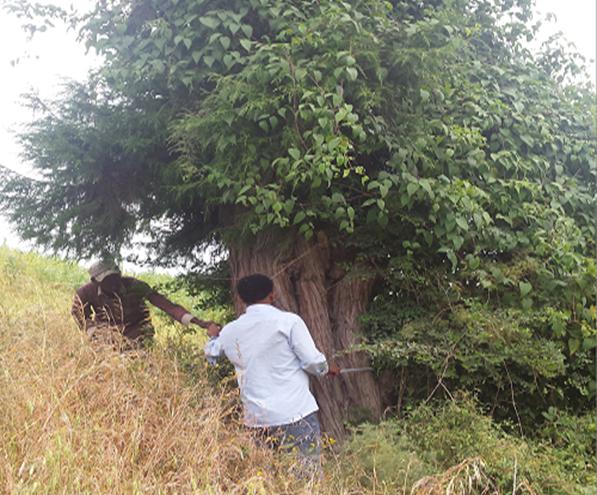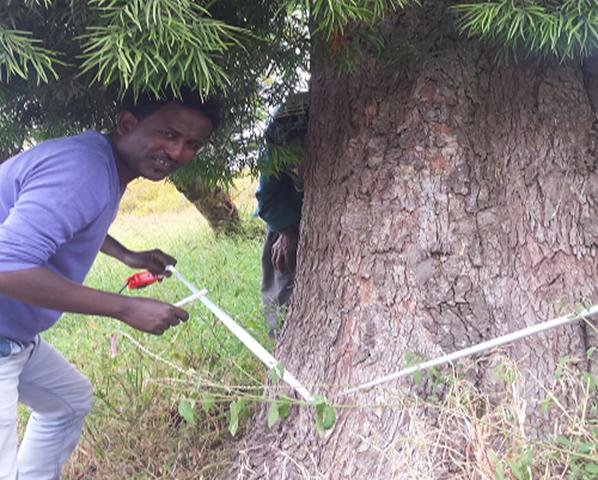Habte Telila
Other projects
21 Sep 2015
Is a Small Eucalyptus Plantation in Farmscape Potential Sites for Herb Species? An Assessment Based on Local, Landscape and Historical Factors
To investigate ecological values and conflicting interests between conservation regulation and restoration efforts pertinent to Podocarpus falcatus and Juniperus procera retained in a farmscape.

Retained tree of Juniperus procera in an agricultural landscape around Chilimo natural forest, Oromia, Ethiopia. Photo © Habte Telila
After the successful completion of the study of colonization of herbs in Eucalyptus plantations in a farmscape supported by Rufford Small Grant that confirmed herb species could colonize and thrive in plantations, especially if problems with grazing and seed limitation could be handled. I found it important to continue the study on a clear understanding of the ecological value of the retained trees of Podocarpus falcatus and Juniperus procera. Farmers retain trees of Podocarpus and Juniperus in their cultivated fields for timber, fodder, and soil fertility (Abebe Yadessa et al. 2009). Moreover retained trees in a farmscape may have ecological function to preserve biodiversity (Manning et al., 2006), e.g. a source of seed directly from the trees or indirectly from dispersal agents such as birds (Harvey et al., 1999). Despite considerable efforts to protect biodiversity in forest reserves and parks in Ethiopia, isolated remnant trees in a farmscape are poorly studied and protected.

Habte Telila measuring the Circumference of a retained tree Photo © Habte Telila
The study of woody species colonization of Eucalyptus plantations (Telila et al., 2015) found that the seed source for woody species regenerated under Eucalyptus plantations was not solely from the remnant forest. Thus it is crucial to investigate the role of remnant trees as a source of seed.
Despite Podocarpus and Juniperus are dominant and co-dominant species of dry Afromontane forest (Friis et. al., 2010). They are commercially valuable timber species and found to grow naturally under tree plantations (Feyera et al. 2002; Lemenih et al. 2004; Tadele 2004; Telila et al., 2015). Both Podocarpus and Juniperus are native to Ethiopia and because of large size and ever green traits and also their importance as a resource for frugivores qualify them as keystone species (Negash, 2010). Podocarpus and Juniperus have been included in IUCN’s Red List of Threatened Species (IUCN, 2012) and evaluated as Least Concern (LC).
The study will be conducted in central Ethiopia surrounding the remnant Chilimo forest, which is located about 90 km west of Addis Ababa (9°04' 37'' N and 38°09' 50'' E). The study focuses on the investigation of ecological values and conflicting interests between conservation regulation and restoration efforts pertinent to Podocarpus falcatus and Juniperus procera retained in a farmscape. In addition to data on abundance, the absolute locations of Podocarpus and Juniperus across the farmscape will be recorded in all directions of the Ecucalyptus patches. . For analysis R software and SPSS will be used.